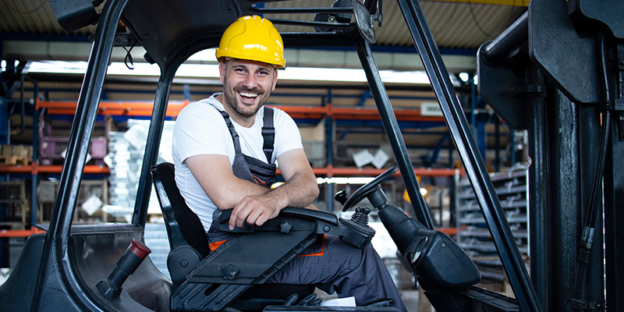With the increasing automation and reliance on material handling equipment and systems, warehouse and storage facilities need to go the extra mile when it comes to personnel safety. Along with appropriate training and hiring certified operators for safe equipment operation, it is also important to ensure the safety of the operator themselves.
Most industries require workers to conform to basic uniform standards—forklift trucks, electric stackers, reach trucks, or other heavy-duty equipment operators are no exception. Wearing appropriate clothing ensures optimal levels of safety alongside increasing their productivity and efficiency. Inappropriate clothing can often lead to injuries and fatalities if the worst happens. So, it is crucial for supervisors to ensure adherence to such basic measures.
Let's understand why protective gear is important for forklift operators.
Forklifts trucks are versatile—they are used for a wide range of tasks and in different environments. When working in confined spaces and narrow aisles a small mistake can lead to catastrophic accidents. In such a case protective gear like an industrial helmet can save the operator’s head from plummeting cargo. Similarly, in outdoor operations, the correct clothing and gear can add an extra layer of armor and protect them from harm while they go about their work.
There are many protective measures that can be considered to ensure the safety of your skilled personnel, here are some of the very basic gear and measures that must be set in place to ensure optimal safety at your workplace.
- Head protection
Protecting the head from falling objects is paramount when operating any material handling equipment. Every work environment poses threats to the personnel involved. In warehouses, there is the ever-present risk of something tumbling from high racking, so wearing an industrial-grade hardhat is essential.
Forklift trucks have robust frameworks that cover the top of the vehicle but other machines like electric stackers and hand-held pallet trucks that do not offer a cabin for the drivers become prone. Head protection gear offers safety to the operators as well as other employees while working in confined spaces and moving loads well above head level.
- Eye Protection
Safety goggles and face shields are gears that protect the worker’s eyes from environmental hazards. It becomes extremely important when operating in dusty or windy environments, around toxic materials or chemicals that may compromise the vision of an operator. Driving a forklift is a job with a high level of responsibility, so having a clear vision is important for everyone’s safety.
- Reflective Safety Clothing
Having great visibility is important for forklift truck drivers but it is equally important that they are clearly visible to all other workplace staff. Various materials handling jobs often require the vehicle driver to get in and out of the vehicle regularly while performing their job, so they must be able to be seen clearly when working both in and around their vehicles. Reflective clothing alerts other workers that heavy machines are being used in the area.
- Foot protection
For an operator, it is important to wear appropriate safety footwear while operating a forklift truck. Industrial shoes with puncture-proof soles and toe protection helps to keep drivers’ feet safe from environmental hazards and prevent crushing in the event of an object falling onto the foot. The same also stands true for other material handling equipment, like electric stacker and reach truck operators as they are also prone to similar risks.
- Hand protection
Operating a forklift involves handling various tasks that require the operator to move out of the cabin and lock, load, and secure cargo before lifting. Safety gloves protect the operator’s hands from harm when handling such loads. They also shield the operator's skin from residue oil and sharp or rough facets that the load might have. This ensures maximum resistance against abrasion or injuries.
